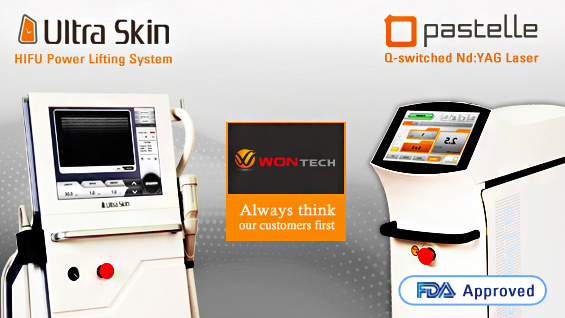‘Best Lecture’ introduces famous lectures in dermatology and plastic surgery held in Korea. This will provide you with the opportunity to see distinguished lectures regardless of time and place. The lecturer of this lecture is Dr. Seo Yeong-seok, the R&D Directorof WON TECH Co., Ltd., a representative laser manufacturer in Korea. Dr. Seo gave a lecture on the ‘Understanding of Laser and Safety Education’ at a training symposium held by the Korean Society for Laser Medicine and Surgery at COEX in May this year. This will be a useful information among laser surgeons for safe laser use. <Editor’s note>
Hello, everyone. I’m Seo Yeong-seok, R&D Director of WON TECH Co., Ltd.. Today I will talk about my experience in safety issues that have been raised in the process of research, development and manufacturing of laser to you dermatologists and plastic surgeons.

Laser as a medical device is used for surgical purposes, such as incision, excisionand removal of tissue with light energy of irradiated from laser. Operator with laser and medical training needs to understand the types and basic principle of laser and be well-informed of guidelines for safe use of laser, to use laser properly in accordance with the purpose of the medical device. Manufacturers should perform electro-mechanical safety test, electromagnetic wave safety test, and laser safety regulation and performance test to ensure the safety of their products.
[Advertisement] Ultra Skin/Pastelle – Manufacturer: WONTECH(www.wtlaser.com)]
Understanding of Laser
Before looking into the safety of laser, let’s briefly discuss about laser.
LASER refers to Light Amplification by Stimulated Emission of Radiation, a device which regenerates a particular wavelength or light of a wavelength band by inducing coherence of light with various gain medium. Commonly generated wavelength bands are ultraviolet rays (100-400nm), visible rays (400-700nm) and infrared rays (700nm-1mm) (Figure 1).

Figure 1. Wavelength Consideration
The type of laser is generally classified by gain medium and laser output type. Gain medium include solid, liquid or gas state, and the laser output types are either continuous or non-continuous (pulse). The unit of output is Watt (W), the unit of electric power, when the laser is continuous wave, and Joule (J), the unit of energy, when the output is pulsed wave. Pulse duration is an important factor for pulsed lasers. There are a variety of lasers with pulse durations raging from mili-seconds (10-3s, ms) to femto-seconds (10-15s, fs) (Figure 2).

Figure 2. Pulse Duration & TRT Considerations
I will not go any further about laser because all dermatologists and plastic surgeons are well aware of them. Now let’s move on the safety of laser.
Safety Ratings of Laser
A laser should be qualified for basic regulations to be developed, manufactured and marketed. Laser manufacturers and others in laser industry should be well aware of these standards before manufacturing a product.
Lasers should conform to IEC60825-1, the regulation for safety of laser products, and by IEC60601-2-22, medical electrical equipment, particular requirements for basic safety and essential performance of surgical, cosmetic, therapeutic anddiagnostic laser equipment. Lasers should be also marked with a classindicating relevant risk. The class include 1, 1M, 2, 2M, 3R, 3B and 4, depending on the accessible emission limit (AEL), which can be seen in Table 1, 2, 3 and 4 of IEC60825-1 in laser output and energy by laser wavelength and irradiation time.
It is classified as medium division A37000 “Laser apparatus for medical use’ according to the Ministry of Food and Drug Safety (MFDS) Notification No. 2013-10 ”Regulations for Product Classification of Medical Device and Class by Product“ (amended on March 8, 2012). The ratings are summarized as below, according to the safety guideline on medical laser published by MFDA and IEC60825-1 standards.
The AEL and maximum permissible exposure (MPE) defined in the standard table of IEC60825-1, based on laser wavelength and output characteristics for safe protection of human body from laser, upon exposure to diffused reflection beam as well as direct or total reflection beam, can be used for confirmation. This ratings are also useful for highlighting the importance of vigilance against the risk of laser.

Table 1. Laser Classification (see IEC 60825-1 and ANSI Z136.1)
-To be continued-
▶ Next Artlcle : #2-2. Understanding and Safe Use of Surgical Laser





















